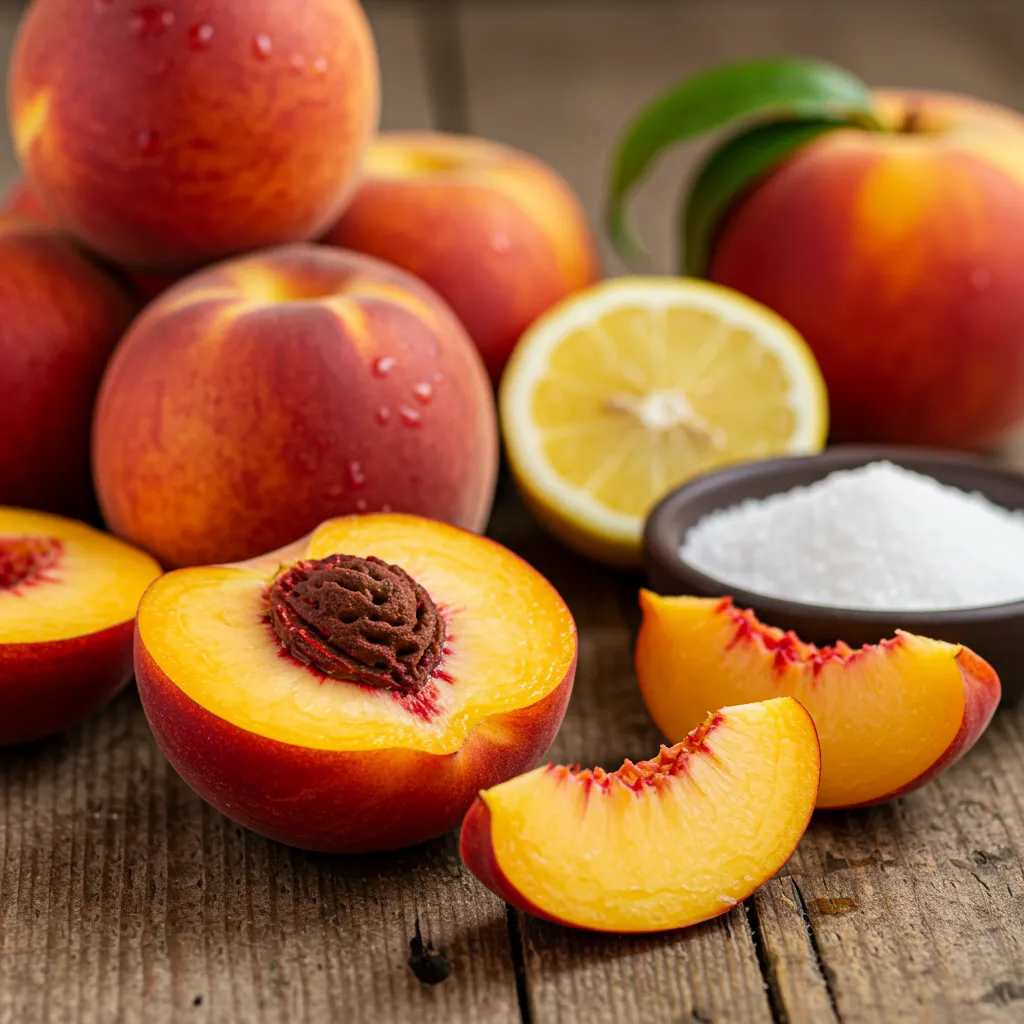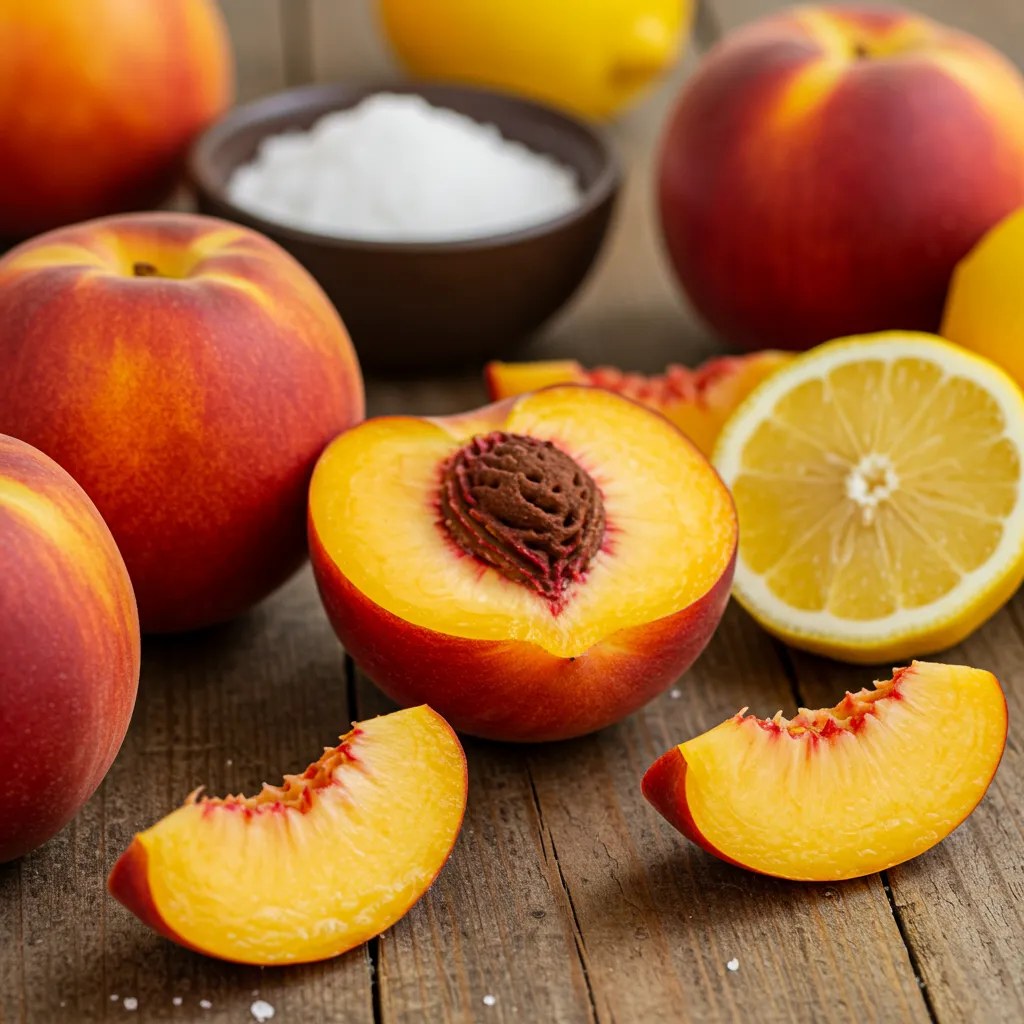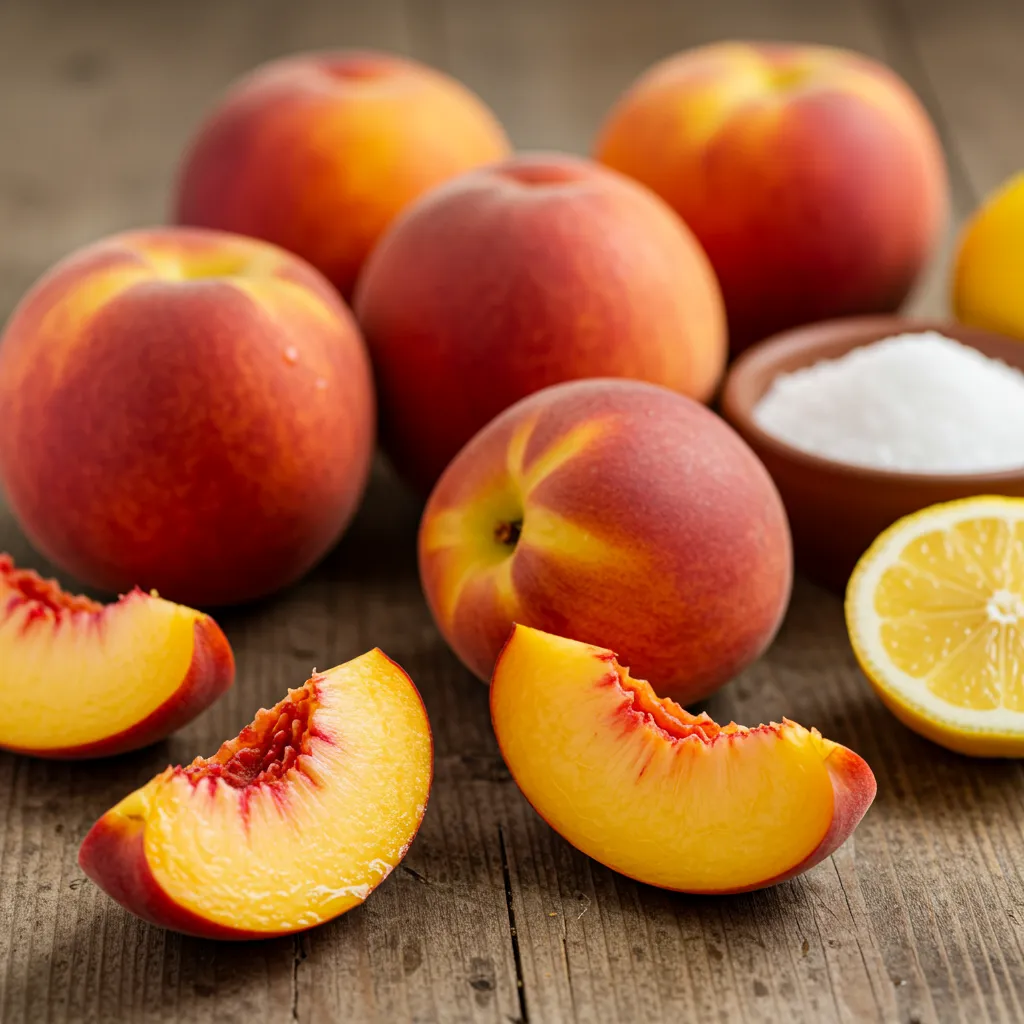Table of Contents
Peaches are among the most beloved fruits in the United States, especially during summer when they reach their peak ripeness. But have you ever wondered, Peaches Tart or Sweet? If you’re confused about their flavor, you’re not alone! Whether you’re picking a peach at the grocery store or growing them in your backyard, understanding the nuances of peach taste can help you select the perfect fruit for your recipes.

In this article, we’ll dive deep into the peach flavor profile, exploring the variations of sweet vs tart peaches, how peach ripeness impacts their flavor, and what you can do to bring out the best taste from your peaches. We’ll also discuss how peach acidity and variety influence the overall sweetness of peaches. Ready to learn all about peach flavor variations? Let’s get started!
What Is the Flavor of Peaches?
Peaches are often classified as sweet or tart depending on their variety, ripeness, and growing conditions. Sweet peaches are typically fragrant, juicy, and smooth, making them ideal for eating fresh, while tart peaches are a bit more acidic and have a sharp, tangy flavor that’s perfect for pies, jams, and other culinary applications.
Peach Taste Profile
- Sweet Peaches: These peaches have a sugary, juicy taste, often with hints of honey or floral notes. The flesh is soft and smooth, making them a delightful addition to fresh fruit salads, smoothies, or desserts.
- Tart Peaches: Tart peaches are more acidic, offering a zesty punch. They are less sugary and are perfect for baking, where their sharpness balances out the sweetness of the dish.
Why Are Peaches Sweet or Tart?
The primary factor that determines whether peaches taste sweet or tart is their ripeness. Unripe peaches tend to have a higher acidity, making them taste more tart. As they ripen, the natural sugars in the fruit develop, reducing the tartness and increasing the sweetness.
Sweet vs Tart Peaches: A Peach Flavor Guide
When it comes to choosing peaches, there are many peach varieties to consider, each offering unique flavor profiles. Let’s break down some of the most popular peach varieties and whether they are generally sweet or tart:
| Peach Variety | Flavor Profile | Best For |
|---|---|---|
| Clingstone | Sweet with a touch of tartness | Best for pies and jams |
| Freestone | Sweet and juicy, low in acidity | Perfect for fresh eating and fruit salads |
| Donut Peach | Sweet, with a slightly floral taste | Great for snacking or adding to desserts |
| Yellow Peach | Balanced sweetness and tartness | Ideal for baking or grilling |
| White Peach | Super sweet with low acidity | Perfect for fresh eating or desserts |
| Red Haven | Tart, yet mildly sweet | Best for preserves and cooking |
How to Tell if Peaches Are Sweet or Tart
1. Look at the Color
Generally, sweet peaches have a deeper, richer color. A vibrant yellow or red hue often indicates ripeness and sweetness. If the peach appears greenish, it’s likely to be more tart.
2. Feel the Texture
Ripe peaches are soft to the touch but not mushy. If the peach feels hard, it’s not fully ripe, and you may experience a tart peach flavor. Let it ripen at room temperature for a few days for a sweeter taste.
3. Smell the Peach
Sweet peaches have a fragrant, aromatic scent, while tart peaches might have a less pronounced or more subtle aroma.

Peach Ripeness and Flavor
Peach ripeness plays a huge role in determining whether a peach will be sweet or tart. When peaches are picked before reaching full ripeness, they often retain more acidity, making them taste tart. As peaches ripen, their sugar content increases, creating that characteristic sweetness we love.
The Stages of Peach Ripeness:
- Unripe Peaches: Hard and green, these peaches are acidic and tart.
- Partially Ripe Peaches: Slightly softer, they still have a tangy edge but are developing sweetness.
- Fully Ripe Peaches: Soft to the touch, sweet, juicy, and fragrant. These peaches are at their best for eating fresh or in desserts.
How Sweet Are Peaches?
A ripe peach can have varying sweetness levels depending on the variety. For example, white peaches are known for their high sweetness, while yellow peaches might have a balance of sweet and tart. Tart peaches like the Red Haven variety are great for cooking but might not be as ideal for fresh consumption.
Tips for Enjoying Peaches: How to Maximize Sweetness
If you want your peaches to be as sweet as possible, here are a few tips:
- Ripen at Room Temperature: Leave peaches on the counter to ripen naturally. Avoid placing them in the fridge as this can delay ripening.
- Use Sugar for Tart Peaches: If your peaches are tart, sprinkle a little sugar or honey on them to enhance their sweetness.
- Check the Stem: The stem should be easily detachable from ripe peaches. If it’s difficult to remove, the peach is likely under-ripe.
Variations of Peaches: Sweet and Tart Peach Recipes
Different peach varieties lend themselves to different dishes. Here are a few recipe ideas based on your preference for sweet or tart peaches:
Sweet Peach Recipes
- Peach Sorbet: Perfect for hot summer days, sweet peaches provide the base for a refreshing treat.
- Peach Cobbler: A classic dessert that makes the most of ripe, sweet peaches.
- Peach Smoothie: Sweet peaches blended with yogurt and a splash of honey.
Tart Peach Recipes
- Peach Jam: The acidity of tart peaches makes for a perfect balance of sweetness and tang.
- Grilled Peaches: Tart peaches caramelize beautifully when grilled and pair wonderfully with meats like pork.
- Peach Sauce: A great addition to savory dishes, tart peaches can be transformed into a flavorful sauce for chicken or pork.
Nutritional Information of Peaches
Peaches are not only delicious, but they’re also packed with nutrients. Here’s a quick look at the nutritional breakdown of one medium-sized peach:
| Nutrient | Per Serving (1 Peach) |
|---|---|
| Calories | 59 |
| Protein | 1 gram |
| Fat | 0.4 grams |
| Carbs | 15 grams |
| Fiber | 2 grams |
| Vitamin C | 10% of daily value |
Peaches are a great source of vitamin C, fiber, and potassium, making them a healthy addition to any diet. Whether you choose sweet or tart peaches, they’re a nutrient-packed snack!
Conclusion
In conclusion, peaches can be both sweet and tart depending on the variety and ripeness. Whether you’re enjoying a sweet peach fresh off the tree or baking a tart peach pie, the flavor profile of peaches is incredibly versatile. By understanding the peach sweetness levels and selecting the right variety for your recipes, you can make sure your dish is perfectly balanced in flavor.
If you’re craving more peach recipes or want to explore different varieties, check out our other articles or subscribe for more peach-related tips! And don’t forget to share your peach creations with us—tag us on social media!
FAQs
1. How do I know if my peaches are sweet or tart? Look for a peach with a vibrant color, soft texture, and a fragrant smell to ensure it’s sweet. If it’s green and firm, it’s likely tart.
2. Can I ripen peaches faster? Yes! Place peaches in a paper bag at room temperature to speed up the ripening process.
3. Are white peaches sweeter than yellow peaches? Yes, white peaches are generally sweeter, with a lower acidity compared to yellow peaches.

